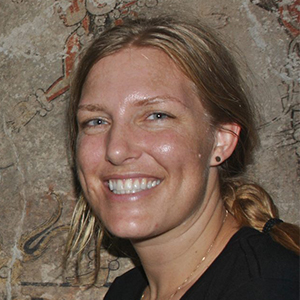
Archaeology
Producing Stone and State: The Intersection of Ancient Maya Domestic and Institutional Economies
My dissertation will evaluate the ancient Maya economy through an investigation of limestone workshops and producer households. Limestone is a ubiquitous material in Mesoamerica that was used by the ancient Maya for a myriad of purposes, including the construction of monumental art and architecture. Stelae, altars, lintels, and temple stairways made of cut and carved limestone were inscribed with narratives documenting real and mythological events, as well as with depictions of key ritual performances and supernatural beings. At the site of Xultun, Guatemala, I conducted excavations in a stone production district where domestic architecture is integrated with quarry workshops wherein I documented incomplete monuments still attached to the limestone bedrock. The limestone producers in this district were specifically producing materials for monumental state expressions, implying a single consumer, the state. Using this district as a case study, my dissertation project will assess multiple working hypotheses to address broader questions: how was limestone production organized, both socially and economically, at Xultun, and what does this tell us about labor and power in early societies? Through the analysis of chipped, ground, and pecked stone from Xultun, this project will establish the distribution and nucleation of limestone production work across the site. Moving from social to economic organization, my dissertation will evaluate the systems of exchange visible in household consumption patterns to determine the commercialization of limestone and the extent of state involvement in its production and distribution. Results will be contextualized within the broader, multi-scalar frames of non-renewable resource management, commercialization and local exchange systems, and the production and projection of state identity in ancient society.